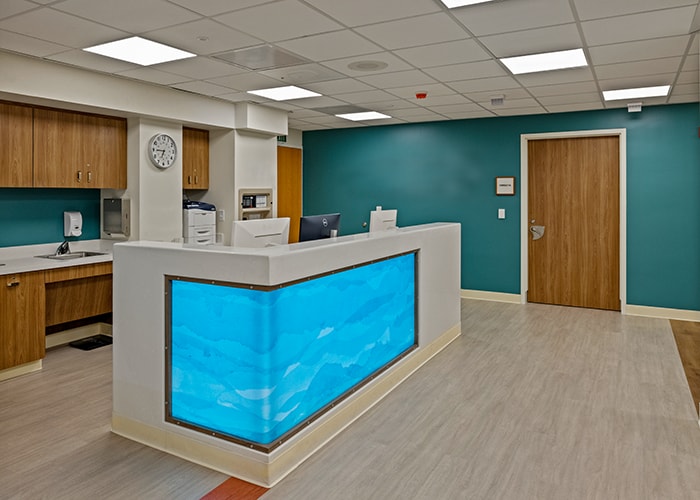New Crisis Stabilization Unit: Help for patients in crisis
Many Emergency department patients experiencing a mental health crisis will find a faster, more focused pathway for care in the new Crisis Stabilization Unit at Community Hospital of the Monterey Peninsula.
The dedicated space and specially trained staff are for people who go to the Emergency department in crisis, but don’t require hospitalization. The goals are to get them specific, brief interventions to manage the crisis, and to help ensure they have the services and support they need to be able to go home safely.
Someone in a mental health crisis may be experiencing suicidal thoughts, significant stressors at home or in life that they are having trouble managing, or concurrent challenges with mental illness and substance use. They often just need therapeutic support, a period of respite, and some space to recuperate.
—Dr. Veronica Searles Quick, Director of Crisis Psychiatry
The Crisis Stabilization Unit opened Monday, March 20, for patients 18 and older. A separate, adjacent area for those 17 and younger is scheduled to open in late May, partially staffed by Ohana, Community Hospital’s innovative mental and behavioral health program for young people.
The need is significant. In January, considered a typical month, 146 Emergency department patients needed mental health assistance or evaluation. “Based on the initial evaluation and safety assessment, many of these patients would have been appropriate to receive care in the new crisis stabilization unit,” said Alexandra Keller, Director of Behavioral Health Services for Community Hospital.
 Historically, people who go to the Emergency department in crisis have had sometimes-lengthy waits for evaluation and related support. If it’s determined they need inpatient care, the wait can be even longer. Adults may go to Garden Pavilion, Community Hospital’s inpatient mental health unit, if it’s appropriate for their needs and a bed is available. For young people, Ohana will eventually have a residential unit at its Ryan Ranch campus, but for now, there are no beds for adolescents or children in Monterey County. “Finding available space somewhere in California can take days,” said Dr. Searles Quick, who is also a child and adolescent psychiatrist with Ohana.
Historically, people who go to the Emergency department in crisis have had sometimes-lengthy waits for evaluation and related support. If it’s determined they need inpatient care, the wait can be even longer. Adults may go to Garden Pavilion, Community Hospital’s inpatient mental health unit, if it’s appropriate for their needs and a bed is available. For young people, Ohana will eventually have a residential unit at its Ryan Ranch campus, but for now, there are no beds for adolescents or children in Monterey County. “Finding available space somewhere in California can take days,” said Dr. Searles Quick, who is also a child and adolescent psychiatrist with Ohana.
The Crisis Stabilization Unit will benefit the patients who meet clinical and safety criteria and free Emergency department staff and space for non-mental-health emergencies.
”I think it will also reduce burnout for staff,” Dr. Searles Quick said. "Watching and caring for patients in the Emergency department, sometimes for days, when we know they need mental health support in a psychiatric setting, is hard for everyone.”
The unit will be staffed with psychiatrists as well as registered nurses and social workers with mental health training. The space was designed with the patients in mind, enabling group and individual therapy, consultations, meetings with families, interaction among patients, respite, and “quiet time.” The primary areas, one for young people, one for adults, are open spaces with comfortable, reclining chairs, activities, and kitchenettes. The adult area will have one “quiet room,” when private space is needed, and the children’s area will have two individual rooms and one quiet room. Up to eight adults and five young people can be accommodated.
Adult stays will probably be no longer than 24 hours, while children’s may be a bit longer, with active participation from their family members a key part of the intervention.
“We hope that this will reduce the need for hospitalization,” Dr. Searles Quick said, “because these patients will have time to recuperate in a therapeutic space.”
Crisis Stabilization Unit
The Crisis Stabilization Unit at Community Hospital is designed for patients who are evaluated in the Emergency department and meet specific criteria, including:
- Are experiencing a mental health crisis that can benefit from a short-term intervention
- Do not require hospitalization or inpatient treatment
- Are not violent
- Do not have advanced dementia